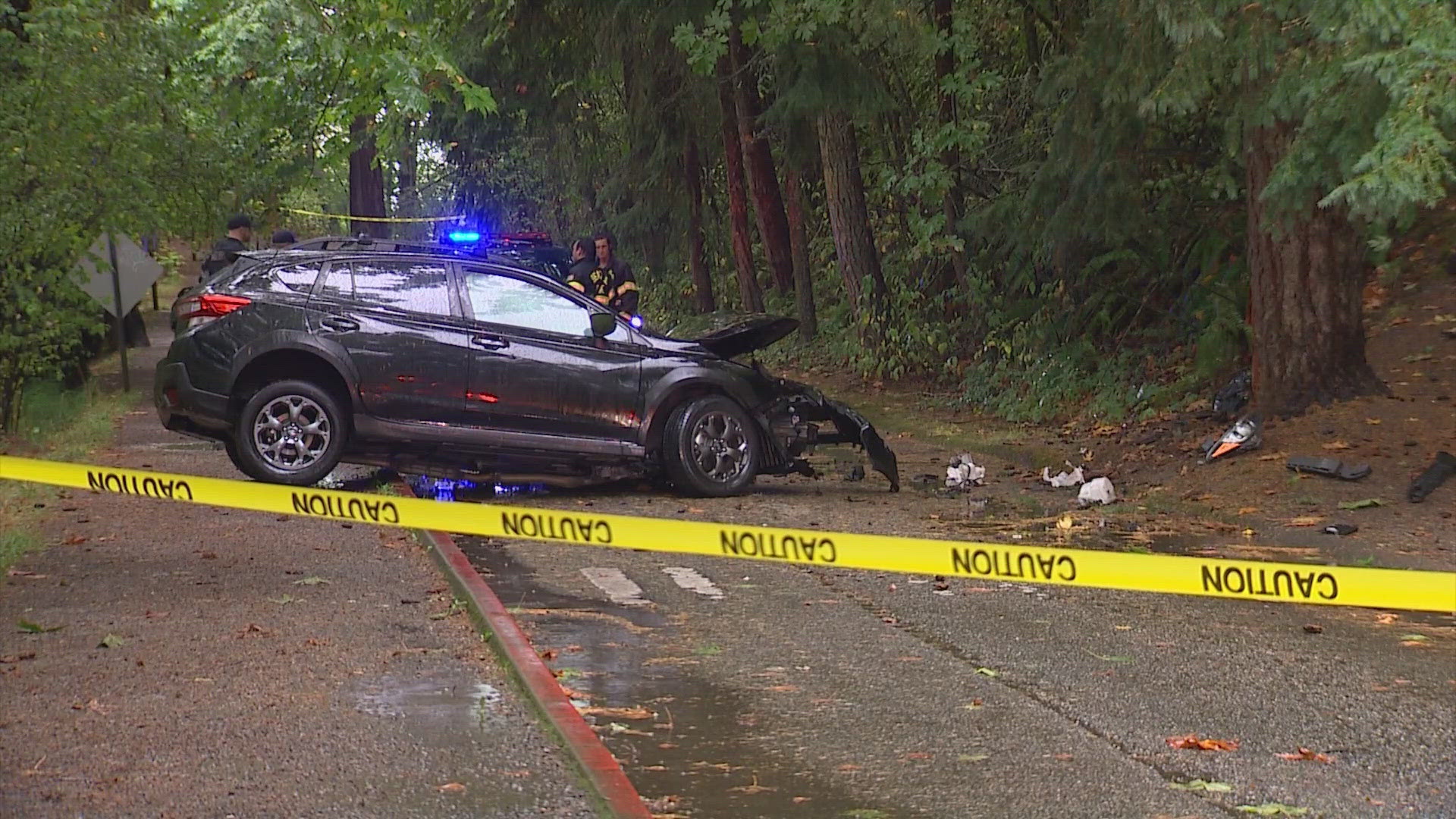WASHINGTON, USA — Washington State recorded its highest number of traffic deaths in 33 years in 2023.
Preliminary data from the Washington Traffic Safety Commission (WTSC) indicates that there were 810 traffic fatalities last year, a 10% increase from 2022.
The WTSC found that more pedestrians (157) and motorcyclists (141) were killed on roadways than in any previous year on record.
“810 is not just a shocking statistic," said Shelly Baldwin, WTSC director. "Every number represents a life lost. A lost family member. A lost co-worker. A lost friend. The people who mourn have had their lives changed forever. I hold them in my heart as I ask drivers to take the actions we know save lives. Drive sober. Be patient. Stay focused. Buckle up.”
Officials previously identified the “fatal four” common causes of traffic crashes and deaths as impairment, distraction, speeding and not wearing seat belts.
The WTSC noted it saw a 36% increase in fatalities involving a distracted driver (135) and a 10% increase in deaths from not wearing a seat belt or restraint (171).
Nearly half of all traffic deaths -- 400 -- involved a person who was impaired by either alcohol or drugs, a 4% increase from 2022. The commission said this number is likely to increase as more toxicology results are released.
The only category to see a decrease from the "fatal four" was excessive speed deaths, which fell 1% to 251. The WTSC said 75% of all traffic fatalities are caused by at least one of the "fatal four."
“This trend is not just alarming – it’s unacceptable,” said John R. Batiste, Washington State Patrol chief. “Driving sober, obeying the speed limit, avoiding distractions, and buckling up – these are all the safe choices – the right choices – that need to be made on our roadways. The cost of choosing otherwise can result in the loss of a life – a cost that is just too high.”
The WTSC said the numbers are not finalized and could increase as the commission collects more data.
Ahead of the 2024 legislative session, WTSC officials recommended lowering the blood alcohol content figure, which determines a drunk driver, from .08 to .05. They also recommended the return of DUI checkpoints. The proposed bill did not make it out of committee in the House.
A safer option for travelers?
The alarming new numbers come as Sound Transit begins an important new six-week phase of work on the light rail that they say will help them prepare for the opening of the Lynnwood extension on August 30.
While the work will mean service disruptions for many light rail riders through mid-June, some residents in communities north of downtown Seattle said that they look forward to having a safer option for getting around.
For resident Ramone Nez, it's personal. When he rides the light rail and bus each day from University District to his job in Lynnwood, he looks out at busy I-5 and is reminded of a moment last year he would rather forget.
"The car stopped automatically and we hit ... full-on traffic. And also, there was a truck behind. Hit us. So our car was squished together," he said, describing a car crash he was in.
Nez narrowly avoided becoming another statistic.
"That’s the reason I got this," said Nez, pointing to a scar on his forehead. It’s also the reason he stopped commuting to and from work by car, and switched instead to public transit.
He said he feels safer on the light rail, and that’s something to which fellow passenger Damian Sworan can relate.
"If I have friends in town, I don’t drive them around," Sworan said.
The Seattle Times reports that since 2009, a total of 10 people on foot and one driver have died in light rail collisions.
Compare that number to the 810 people who died on Washington roads just this past year alone, and you can see why some say they feel safer.
"Tons of people on the road, trying to find parking and all that," said Sworan. "If you can just walk from your apartment or take a bus to a light rail station, that’ll save you so much stress.”
Due to potential for population growth, Sound Transit was not able to provide estimates for how much the rail extension projects may reduce congestion going forward. They did say it will increase efficiency for commuters, however.
“I'm really excited because it'll bring the light rail way closer to my house," said Zuzu Loeb, a local high school sophomore. "So I'm not gonna have to catch a second bus. I can just walk right into my house.”

